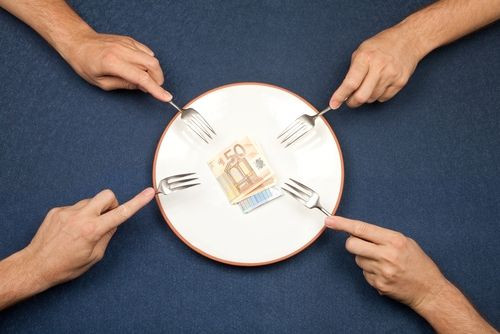Healthy Food Prices Continue To Rise And Leave Less Hope For Middle Class To Eat Right

The world is in pretty bad shape as far as the average waistline is concerned; we’re gaining weight and at alarmingly high rates. It’s well-documented that money plays a large role in eating, and according to a new study, it turns out healthy food prices have risen sharply over time and will continue to widen the gap. UK researchers from the University of Cambridge studied the association between the nutritional value of food and how much they’re costing people, and published their findings in the journal PLOS One.
"Food poverty and the rise of food banks have recently been an issue of public concern in the UK, but as well as making sure people don't go hungry it is also important that a healthy diet is affordable," the study’s lead author Nicholas Jones, said in a press release. "The increase in the price difference between more and less healthy foods is a factor that may contribute toward growing food insecurity, increasing health inequalities, and a deterioration in the health of the population."
Researchers examined data from the UK Consumer Price Index in order to track the cost of 94 different food and beverage items from 2002 and 2012. In 2012, 1,000 calories' worth of healthy food cost approximately $12, while 1,000 calories of unhealthy food only cost an average $4. The price of all foods rose an overall 35 percent in the 10-year period, making the price gap starkly demonstrative of a food system that sets up the middle and lower class for failure.
How do we expect people to recover from their overweight or obese state if they can’t afford to? The Supplemental Nutrition Assistance Program (SNAP), commonly known as food stamps created to help low-income individuals and families eat. But that’s the whole catch — just making sure someone doesn’t starve does not mean you’re feeding and providing for their nutritional needs. But when a mother is given a SNAP budget, she is going to figure out how to stretch each dollar. If she’s between choosing the more expensive whole grain bread versus the cheaper white bread or choosing blocks of processed cheese versus a skim milk mozzarella, what do you think she’s going to choose?
"The finding shows that there could well be merit in public health bodies monitoring food prices in relation to nutrient content, hopefully taking into account a broader selection of foods than we were able to in this study," Jones said. In the United States alone, more than one-third of adults are obese, and it has a lot to do with their socioeconomic statuses, according to the Centers for Disease Control and Prevention (CDC).
In 2010, the CDC found there were 72.5 million obese American adults, and 41 percent of them had incomes at or above 350 percent of the poverty level, which means these people are far away enough from living in poverty that they probably don’t need food stamps or supplement programs to help them eat healthy. So, the obesity epidemic cannot completely be blamed on for healthy foods being too pricey, but instead it may be a matter of prioritizing health with instant gratification. This group can probably also afford gym memberships, yoga classes, and at-home equipment.
"To help achieve long-term improvements in eating habits, we need to address the high and rising prices of healthier foods, which is likely to be influenced by a number of factors, including agricultural policy and production, food distribution, and retail pricing strategies," the study’s senior author Dr. Pablo Monsivais from CEDAR in Cambridge, said in the press release. "Additionally, there is growing evidence that targeted subsidies can promote healthy eating for people on low incomes."
Source: Monsivais P, Jones NRV, Conklin AI, and Suhrcke M. The Growing Price Gap between More and Less Healthy Foods: Analysis of a Novel Longitudinal UK Dataset. PLOS One. 2014.
Published by Medicaldaily.com



























